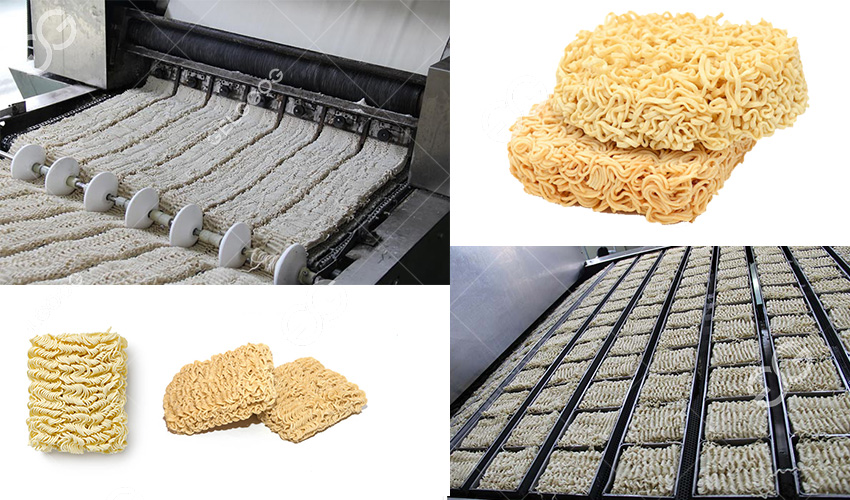Our page uses cookies
We use cookies to personalize and enhance your browsing experience on our website. By clicking "Accept All", you agree to use cookies. You can read our Cookie Policy for more information.
Make Food Production Easier
Sign up
 Your Position:Home>
Your Position:Home>Instant noodles are a pantry staple across the globe—fast to prepare, affordable, and incredibly satisfying. But behind every cup or packet is a highly automated and standardized instant noodle production line designed for efficiency, consistency, and food safety.
In this article, we’ll walk you through the full manufacturing process of instant noodles and highlight what’s involved in setting up an industrial noodle factory. Whether you’re simply curious or planning to invest in a noodle production business, this guide gives you the essential overview.

Inside the Instant Noodle Production Line: Step-by-Step
1. Ingredient Preparation: Starting with the Basics
Every instant noodle factory begins with wheat flour—the main raw material. To ensure the desired texture and elasticity, food-grade salt and an alkaline solution (typically sodium carbonate) are added. These ingredients are essential to create the signature chewiness of instant noodles.
2. Mixing and Kneading: Creating the Dough
The flour mixture is blended with water using an industrial dough mixer. This stage is crucial in large-scale production, as consistency affects both texture and cooking performance. The dough is then kneaded and passed through roller equipment to form flat, uniform sheets.
3. Cutting and Steaming: Forming the Noodle Strands
Next, the dough sheets pass through precision cutters to produce long, thin noodles. These raw strands are then steamed—this partially cooks them and helps stabilize the structure before drying. High-output noodle steaming machines ensure efficiency and consistent quality in large batches.
4. Drying and Shaping: Fried or Non-Fried Noodles
After steaming, the noodles must be dehydrated to improve shelf life. This is done through two main methods, depending on the product type:
Fried noodles: Dehydrated using deep-frying machines to give them a crispy texture.
Non-fried noodles: Dried using hot air dryers for a lower-fat alternative.
During this stage, the noodles are shaped—usually into square blocks or round portions suitable for cup noodles.
5. Cooling and Packaging: Final Preparation
The dried noodles are cooled using an air-cooling system to room temperature. They are then packed automatically along with seasoning sachets, which may contain soup bases, seasoning oils, or dehydrated vegetables. Modern noodle packing machines ensure airtight sealing and food hygiene.
6. Quality Inspection and Distribution
Before leaving the factory, all products pass through a quality control system to check for consistency, weight, moisture levels, and packaging integrity. Only those that meet safety and quality standards are approved for shipping.
If you are interested in the machine, contact us
Email: isle@gelgoog.com
WhatsApp/Phone: +86 18538123076
 E-Mail
isle@gelgoog.com
E-Mail
isle@gelgoog.com
 Contact
0086-18538123076
Contact
0086-18538123076
 Whatsapp
0086-18538123076
Whatsapp
0086-18538123076
 TOP
TOP
We use cookies to personalize and enhance your browsing experience on our website. By clicking "Accept All", you agree to use cookies. You can read our Cookie Policy for more information.